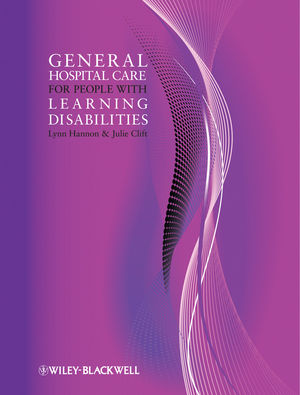General Hospital Care for People with Learning DisabilitiesISBN: 978-1-4051-8563-9
Paperback
264 pages
December 2010, Wiley-Blackwell
 |
||||||
Acknowledgements ix
1 Understanding Learning Disability 1
Introduction 1
Definitions and causes of a learning disability 2
How to establish if your patient has a learning disability 9
Perceptions and attitudes towards people with a learning disability 10
Health needs of people with a learning disability 15
Family/carer's needs 30
Introduction to person-centred approaches 32
Conclusion 35
References 38
2 The Process of Health Care 40
Introduction 40
The patient journey 41
Pre-admission 53
Care planning and developing care pathways 68
Intervention and treatment 71
Liaison and discharge planning 78
Conclusion 80
References 83
3 Communication 85
Introduction 85
What is communication? 86
Models of communication – verbal and non-verbal 90
Developing relationships with people with a learning disability 93
Communicating with people with a learning disability 98
Tools to aid communication 109
Helping people with learning disabilities to make choices 118
Communicating with family and carers 123
Conclusion 124
References 125
Introduction 127
What do we mean when we say a person displays challenging behaviour? 128
What could different behaviours mean? 130
How hospital admission can affect individual behaviour and ways of overcoming this 135
How to respond to behaviour in health care situations 137
The use of behavioural indicators in the assessment of pain 152
Risk assessment 159
Conclusion 160
References 165
5 Consent 167
Introduction 167
What do we mean by consent? 167
Ethical decision making 169
The law on consent and capacity to consent (in England and Wales) 172
Defining capacity 177
Obtaining consent 181
Advocacy and empowerment 188
Planning for future care 189
Emergency situations 190
What to do when consent is refused 190
Record keeping 193
Conclusion 194
References 197
6 Ethical and Political Aspects of Care 198
Introduction 198
Health care ethics and professional accountability 198
Safeguarding children and vulnerable adults 208
Cost 213
Values and beliefs 214
Political issues affecting service provision in both learning disability and secondary care services 217
Interdisciplinary approaches and partnership working 224
Where do we go from here? 230
Conclusion 232
References 237
Useful Websites and Contacts 239
Index 246



